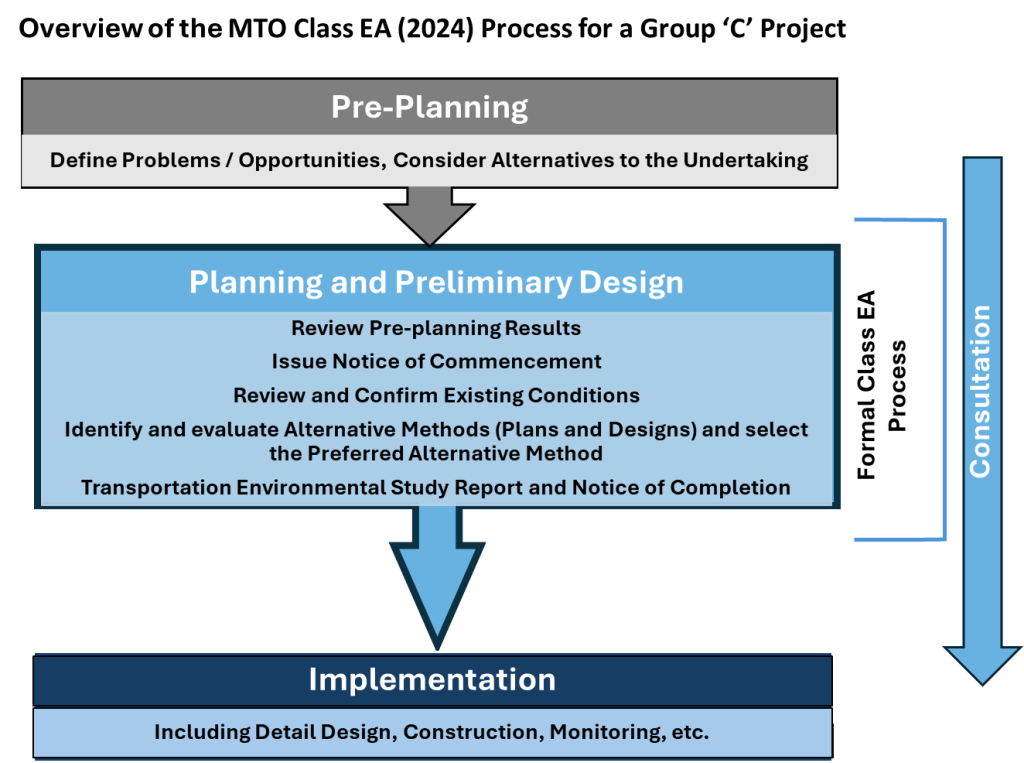Class Environmental Assessment Process
This Project will follow the approved planning process for a Group ‘C’ project under the Class Environmental Assessment (Class EA) for Provincial Transportation Facilities and Municipal Expressways (Class EA (2024)). The Class EA (2024) document can be viewed here. The Class EA (2024) streamlines the implementation process for transportation projects, reducing delays on projects that matter most to Ontario communities while maintaining strong environmental oversight and protection.
The Class EA process includes on-going opportunities for public involvement. Comments can be submitted to the project team by telephone or email. All comments received, with the exception of personal information, will become part of the public record. Please visit the Contact page to submit a comment or be added to the project contact list.
Once the Recommended Plan for intersection improvements is determined, a Transportation Environmental Study Report (TESR) will be available for a 30-day comment period in accordance with Class EA requirements. The Notice of Completion advising of the availability of the TESR for public review and comment, will be published in Exeter Lakeshore Times Advance, posted on this project website, and distributed to the project contact list.
The TESR will document:
- Description of the project and Class EA process
- Stakeholder consultation
- Review of the existing conditions
- Generation and evaluation of design alternatives
- Description of the Recommended Plan
- Environmental impacts, mitigation measures and commitments to future work
Detail Design will finalize the details of the Recommended Plan, confirm appropriate mitigation measures for any required environmental impacts, and address commitments made during Preliminary Design.


